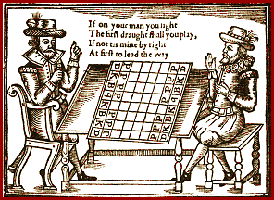|

On Tuesday, April 24, 2007, I read a review in
USA Today on a book entitled, The Yiddish Policemen's Union. The
book sounded interesting enough, but except for one tiny reference that I
overlooked, nothing in the review gave me any associations with chess.
Coincidentally, Lawrence Totaro also read a review of the same book on the same
day in the
N.Y. Times and informed me of the chess connection.
The New York Times informed us, among other things -
Since the collapse of his marriage, Landsman has been
living in the seedy Hotel Zamenhof, where, one night, “somebody has put a
bullet in the brain of the occupant of 208, a yid who was calling himself
Emanuel Lasker.” One of the few clues in the room is a chessboard
with a mystifying configuration of pieces.
Landsman’s investigation into Lasker’s death will plunge
him into a re-evaluation of his own tortured familial history and his
relationship with Bina, who, unexpectedly, has become his new supervisor at
work. It will cause him to re-examine his feelings about police work and
larger, more existential issues. And it will threaten to throw him into a
spiral of suicidal despair.
Working with his half-Tlingit partner, Berko, Landsman
soon discovers that Lasker is an alias for a troubled heroin addict named
Mendel Shpilman, the only son of a powerful rabbi, known for his gangland
ties. As a child and as a young man, Mendel was not only a chess genius,
beating the best and brightest of his elders, but also a brilliant student,
rumored to possess magical healing powers. There were even whispers that
Mendel might be “the righteous man of this generation” — the Messiah, perhaps,
arrived to redeem the world.
The Boston Globe review
The Chess
References
Page 4
On the bedside table Lasker kept a chessboard It looks like he had a game
going, a messy-looking middle game with Black’s king under attack at the center
of the board and White having the advantage of a couple of pieces. It’s a cheap
set, the board a square of card that folds down the middle, the pieces hollow;
with plastic nubs where they extruded.
Page 305
There are five books stacked on the nightstand by the old man’s bed. A Yiddish
translation of chandler. A French biography of Marcel Duchamp. A paperback
attack on the wily agents of the Third Russian Republic that was popular in the
U.S. the year before. A Peterson field guide to marine mammals. And something
called Kampf, in the original German, by Emanuel Lasker. (Kampf or
Struggle,
published in 1907, was one of two philosophical books by Lasker, the other
being Die Philosophie des Unvollendbar or The Philosophy of the
Unattainable, published in 1919).
Page 398
But as Landsman stares at the chessboard, staring at a chessboard, for the first
time in his life, feels good. It feels pleasurable, in fact. Standing there
moving the pieces in his mind, seems to slow or at least to dislodge the needle
inking over the black spot in his brain. He focuses on the promotion at b8. What
if you change that pawn to a bishop, a rook, a queen, a knight?
A knight, he decides. And
then Black has to move the pawn at d7-but to where?
He settles in to play it out, not because of some forlorn hope that it might
lead him to the killer, but because he really needs, all of a sudden, to play
the game out.

I'm not sure whether the chess association is critical to the story
or simply incidental, but the occurrences of chess in modern novels are rare
enough to make this story unique and noteworthy in that respect.
The book can be purchased at
Amazon
Author Michael Chabon
|
Archives by Title
links
personal
The Life and Chess of Paul Morphy
chess - general
Chesslinks Worldwide
chess - history
Mark Week's History on the Web
Chess Journalists of America
Chess History Newsgroup
Hebrew Chess
Chess Tourn. & Match History
Super Tournaments of the Past
La grande storia degli scacchi
Bobby Fischer
Bill Wall's Chess Pages
|

